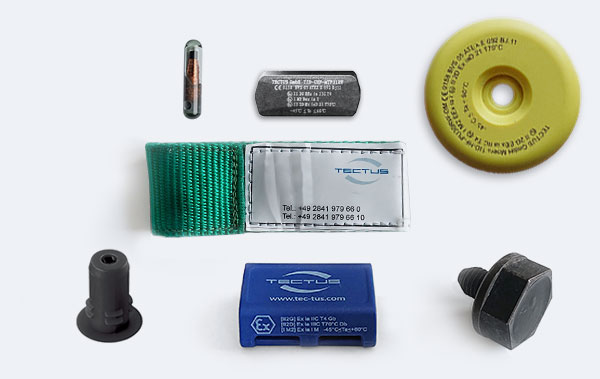Menu
Close
A lot of our TOP SELLER Transponders are available as ON STOCK material.

We develop customer-specific TAGs in accordance with customer specifications and requirements and have a wide range of well-known manufacturers.
We have many BEST sellers from the leading transponder manufacturers ON STOCK, and supply them in any quantity that is required.
The TECTUS PEAK Collection also shows what is possible in terms of design and construction and extreme requirements.
Our TAG portfolio includes all of the most popular microchip manufacturers and IC types.
A selection of all frequencies <> LF <> HF <> UHF <> and technical data with information about memory size and ISO norms can be found here.
RFID stands for Radio Frequency Identification and is the contactless transmission of data between a transponder and the RFID reader. The exchange is only possible via an electromagnetic field, which is generated by the reader.
The design of an RFID transponder in terms of size, construction, material or color depends on the specific application. However, the internal structure (the E-unit) of all transponders always consists of two components: A chip and an antenna.
The RFID-based identification process with its contactless transmission of data between a transponder and the RFID reader is increasingly being used in the field of automatic identification of nameplates in industry. For this purpose, DIN SPEC 91406 defines the automatic identification of physical objects and information on physical objects in IT systems, particularly IoT systems.
DIN SPEC 91406 standardizes the use of electronic identification plates in industry. Digital nameplates based on RFID transponders are thus becoming an essential part of industrial automation. We will be happy to support you in selecting the right transponder.
RFID systems are differentiated on the basis of frequencies and transmission rates:
1. LF (Low Frequency) is the range of low frequencies and transmission rates. This makes RFID transponders less sensitive to metals and liquids than transponders of other frequencies.
Advantages:
● Robust and reliable
● Insensitive to external influences.
● Especially suitable for: Animal identification
2. HF (High Frequency) or NFC (Near Field Communication) is characterized by high transmission rates. Due to the short wavelength on which the RFID transponders operate, fewer antenna windings are required and the RFID antennas can therefore be smaller. In addition, reading via smartphone or tablet is possible in the NFC area, which opens up a large field of mobile application possibilities.
Advantages:
● Uniform frequency standards worldwide
● Small designs possible
● Particularly suitable for: Mobile applications
3. UHF (Ultra High Frequency) transponders have particularly high transmission rates and can transfer large amounts of data. In addition, RFID UHF technology has particularly long reading ranges of several meters.
Advantages:
● Readings even at large distances
● Bulk reading possible
● Particularly suitable for: Logistics applications
Since the RFID transponder does not require direct or visual contact, it enables automatic identification and localization of objects or individuals. The received signals penetrate a wide variety of materials such as wood, cardboard, fabric or plastic, which qualifies it for almost all industrial sectors.
Unlike barcodes, RFID transponders are insensitive to pollution and are particularly resistant to mechanical stress. This means that RFID transponders can also be used in harsh and difficult environments.
RFID transponders allow, due to their unique individual UID number, a clear identification of objects, persons and animals. RFID technology is characterized by its high technical security standards.
Furthermore, many RFID transponders have an internal memory and can be provided with various data.